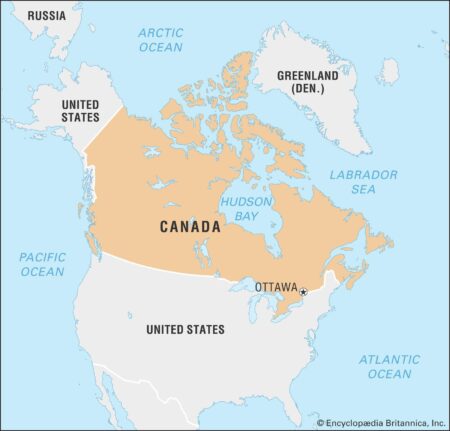In a move that escalates trade tensions between the United States and Canada, President Donald Trump announced on Thursday the imposition of 35% tariffs on Canadian goods starting August 1. The president warned that higher levies would follow if Ottawa retaliates against the U.S. measures. The announcement marks a significant development in the ongoing dispute over trade policies between the neighboring countries, raising concerns about potential economic repercussions on both sides.
Trump Unveils 35 Percent Tariffs on Canadian Imports Effective August First
President Trump announced a sweeping 35 percent tariff on a wide range of Canadian goods, set to take effect on August 1. This move targets key sectors including automotive parts, lumber, and dairy products with the administration citing unfair trade practices and ongoing disputes over cross-border policies. The White House emphasized that these tariffs aim to protect American industries and workers, warning that failure to resolve trade disagreements could prompt even higher levies in the near future.
Key sectors impacted by the tariffs include:
- Automotive parts and vehicles
- Lumber and wood products
- Dairy goods and agricultural products
- Steel and aluminum imports
| Sector | Current Tariff | New Tariff | Effective Date |
|---|---|---|---|
| Automotive | 5% | 35% | August 1, 2024 |
| Lumber | 0% | 35% | August 1, 2024 |
| Dairy | 0-10% | 35% | August 1, 2024 |
Potential Economic Fallout for Canada as Ottawa Faces Escalating Trade Pressures
Canada’s economic landscape is bracing for significant disruption as the newly imposed 35% tariffs loom, threatening to destabilize key industries and trade dynamics. The agricultural, automotive, and manufacturing sectors stand to bear the brunt of these levies, raising concerns over job losses, increased consumer prices, and interrupted supply chains. Experts warn that this abrupt policy shift fuels uncertainty, potentially deterring investment and slowing economic growth just as global markets navigate post-pandemic recovery challenges.
Industry analysts highlight several immediate effects:
- Export slowdowns: Canadian goods may become less competitive in the U.S. market due to higher costs.
- Supply chain realignments: Companies might seek alternative sources to bypass tariffs, resulting in logistical challenges.
- Price volatility: Consumers could face increased prices on a range of everyday products.
- Retaliatory risks: Ottawa’s potential countermeasures could ignite a costly trade conflict impacting broader bilateral relations.
| Sector | Potential Impact | Estimated Job Risk |
|---|---|---|
| Agriculture | Export demand decline | 10,000 |
| Automotive | Increased production costs | 15,000 |
| Manufacturing | Supply chain disruptions | 12,000 |
Experts Advise Businesses to Reassess Supply Chains and Anticipate Regulatory Responses
With the sudden announcement of a 35% tariff on Canadian goods effective August 1, businesses across North America are bracing for significant disruptions. Industry experts emphasize the urgent need for companies to reevaluate their supply chains, particularly those heavily reliant on cross-border trade with Canada. The potential for retaliatory measures by Ottawa compounds uncertainty, prompting firms to explore alternative sourcing options and increase inventory buffers to mitigate risks. Supply chain managers are also advised to strengthen relationships with multiple suppliers and invest in technology-driven visibility tools to quickly adapt to the rapidly evolving trade landscape.
Regulatory responses are expected to unfold as governments navigate escalating trade tensions, making proactive compliance and strategic planning more critical than ever. Key considerations for businesses include:
- Monitoring policy announcements in real time to anticipate changes
- Assessing tariff impact on product pricing and profit margins
- Engaging trade experts to explore legal exemptions and mitigation strategies
- Communicating transparently with customers and partners about potential delays or cost adjustments
| Sector | Potential Tariff Impact | Recommended Action |
|---|---|---|
| Automotive | High | Source domestically, diversify suppliers |
| Agriculture | Moderate | Review contract terms |
| Technology | Low to Moderate | Optimize inventory, monitor regulations |
In Retrospect
As the August 1 deadline approaches, the newly announced 35% tariffs mark a significant escalation in trade tensions between the United States and Canada. With President Trump warning of even higher levies should Ottawa choose to retaliate, industries and markets on both sides of the border brace for potential disruptions. Stakeholders will be closely monitoring diplomatic developments in the coming weeks, as the unfolding dispute threatens to reshape the economic relationship between two longtime allies.




